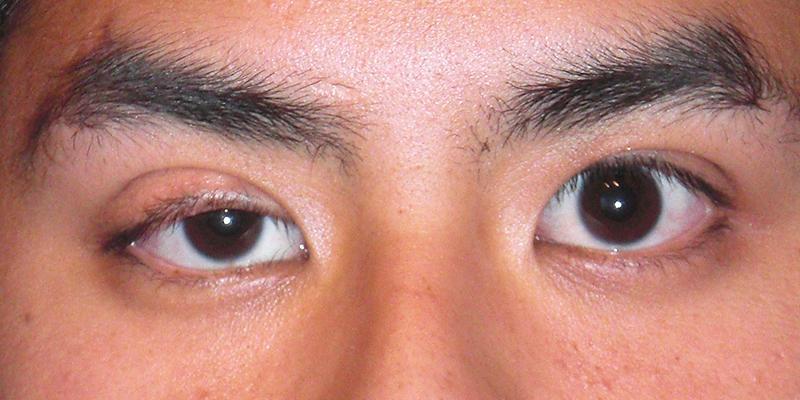Ptosis: What Causes Droopy Eyelids + How to Treat Them

What is ptosis? The name of the condition is not commonly known, but you know it when you see it: ptosis refers to pathologic droopy eyelid. Its a condition that can leave one or both eyes chronically looking like the individual just got out of bed. In the former, its unilateral ptosis, and in the latter its bilateral ptosis.
The condition can be congenital (present at birth) or acquired (developed later in life).
WHAT CAUSES PTOSIS?
There are many different causes. Ptosis doesnt seem to have higher prevalence in men vs. women, or different ethnicities, but, demographically, ptosis has a higher prevalence among older adults.
Weakness in the levator muscle can lead to droopy eyelid, as contraction of the levator muscle lifts the eyelid.
When the condition is congenital, it is often do to improper development of the levator muscle.
By itself, ptosis is not necessarily dangerous. If severe enough it can impair vision, and sometimes it can point to a more serious underlying medical condition.
In less serious conditions, ptosis may simply be the result of a stye on the eyelid. It could be a minor nerve injury.
Unfortunately, it might also point to a more serious condition: such as a stroke, a brain tumor or even forms of cancer affecting nerves and muscles.
WHAT TO DO ABOUT PTOSIS?
If ptosis is congenital, it is typically not indicative of a more serious condition. In this case, doctors may advise a patient medical treatment isnt necessary unless they desire it for cosmetic reasons.
Individuals can opt for ptosis surgery, where the levator muscle is tightened through a process known as levator advancement. In serious enough cases, surgery may be advised in children so that they dont develop amblyopia (lazy eye).
Alternatively, a crutch can be added to the frames of glasses which holds the eyelid in place.

Want to know more? Call (571) 203-1300 or visit us online for more information.
